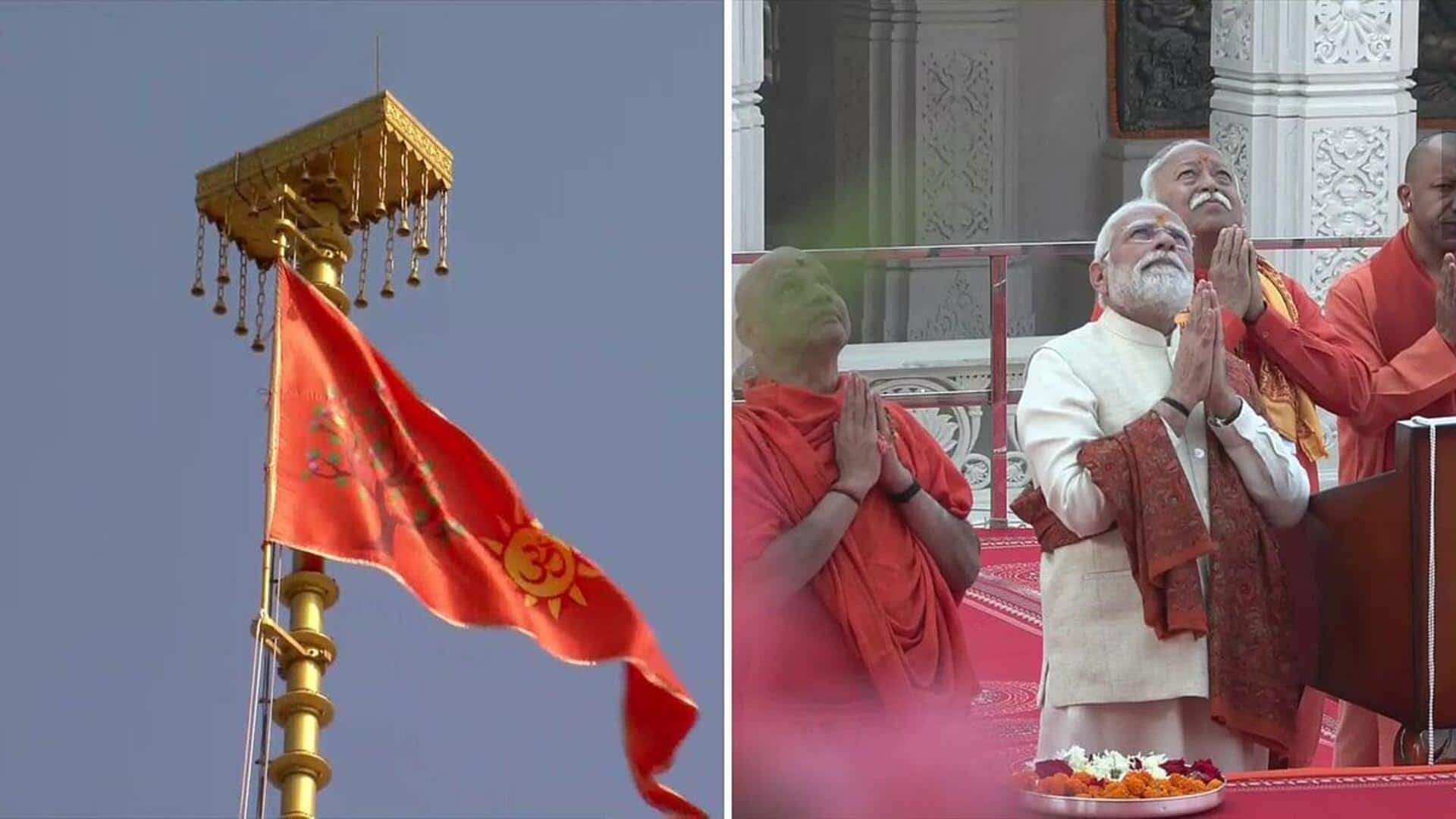
Modi hoists saffron flag atop Ram Mandir in Ayodhya
What's the story
Prime Minister Narendra Modi on Tuesday hoisted a saffron flag at the Ram Mandir in Ayodhya, Uttar Pradesh. The event marked the completion of the temple's construction, called the Dhwajarohan ceremony. It was held at an auspicious time, 'Abhijit Muhurat,' at 11:55am. The ceremony was attended by around 10,000 people, including Rashtriya Swayamsevak Sangh (RSS) chief Mohan Bhagwat and Uttar Pradesh Chief Minister Yogi Adityanath.
Symbolic flag
Flag design and architectural significance
The saffron flag, a right-angled triangle measuring 10 feet by 20 feet, features a radiant Sun representing Lord Rama's brilliance and valor. It also has an 'Om' symbol and the Kovidara tree image. The flag was hoisted on a Shikhar built in the North Indian Nagara style. An 800-meter Parkota surrounding the temple is built in the South Indian architectural style, showcasing the temple's diverse architecture.
Twitter Post
PM Modi, RSS chief Mohan Bhagwat ceremonially hoist saffron flag
#WATCH | Ayodhya Dhwajarohan | PM Modi and RSS Sarsanghchalak Mohan Bhagwat ceremonially hoist the saffron flag on the Shikhar of the sacred Shri Ram Janmbhoomi Temple, symbolising the completion of the temple’s construction.
— ANI (@ANI) November 25, 2025
The right-angled triangular flag, measuring 10 feet… pic.twitter.com/Ip8mATz2DC
PM's itinerary
Modi's visit to Ayodhya and security measures
During his visit, PM Modi also visited Saptmandir and Sheshavtar Mandir. He performed 'darshan' and 'pooja' at Ram Darbar Garbh Grah and Mata Annapurna temple. The date of the ceremony also marks Guru Tegh Bahadur's martyrdom day, adding to its spiritual significance. Ahead of the event, CM Adityanath reviewed preparations in Ayodhya. A total of 6,970 security personnel were deployed with anti-drone technology for safety during the ceremony.
Heritage display
Temple's cultural heritage
The temple complex has 87 stone episodes from Lord Ram's life and 79 bronze-cast episodes from Indian culture. These elements offer visitors insight into India's cultural heritage. The temple was designed by Shri Chandrakant Sompura of Ahmedabad, with Larsen and Turbo being responsible for the construction work and Tata Consulting Engineers appointed as advisory consultants. Engineers and premier institutes, including the Indian Institute of Technology (IIT) Madras, IIT Delhi, IIT Bombay, and IIT Guwahati, were involved in the construction.